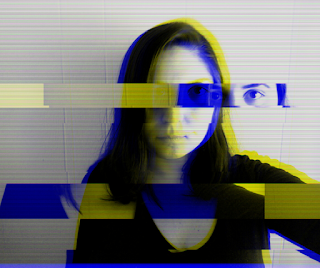Finding Truth, Part 1
I’ve been thinking for some time now about how easily fooled some people are, believing one thing as opposed to another. As an attorney I can tell you, there are at least two sides to every story, if not, more. Most people can acknowledge as much, but do they really give each side a fair chance without compromising common sense?
It would appear not.
Just when I think I’ve found rational, inquisitive minds, I see them fall into the same traps I’ve learned long ago to avoid: party affiliation, groupthink, oversimplifying the opposing side. They don’t give both sides a fair chance because they find their identities in their own position. But I’ll save more on this for Part 2.
Then there are times when people are too forgiving to one side in all its absurdity, blindly following the garrulous and sophisticated speech of a seemingly intelligent individual. Take for example Kambat v. St. Francis Hosp., 678 N.E. 2d 456 (N.Y. App. 1997), a medical malpractice case where, after undergoing a hysterectomy, a patient began to experience severe abdominal pain. An X-ray revealed that a laparotomy pad, measuring 18 by 18 inches was inside of the woman’s abdomen. Several of the same type of laparotomy pads were used during her hysterectomy and were only able to be accessed by medical personnel. The explanation is clear: the doctors left one of these pads inside of the woman. However, the jury found that the hospital was not liable for the woman’s injury because an expert witness told them that if the woman’s gag reflex were suppressed, she would be able to swallow the laparotomy pad. That’s right folks, the defense was: she ate it.
But wait, it gets better. The plaintiffs appealed the verdict, arguing that the legal doctrine of “Res Ipsa Loquitur” should have been included in the jury instructions. Latin for “It speaks for itself,” Res Ipsa Loquitur “simply recognizes what we know from our everyday experience: that some accidents by their very nature would ordinarily not happen without negligence.” Id. at 494. In other words, circumstantial evidence is enough to find someone liable if the truth of the matter is clear. The plaintiffs won their appeal and the judge ordered a new trial, with the doctrine of “Res Ipsa Loquitur” included in the jury instructions. The jury for the new trial found the hospital not liable yet again.
That’s the power of persuasion.
Now if that’s not enough to get you riled up, let’s turn to another area of concern: wrongful convictions. The Innocence Project revealed that eyewitness misidentification was responsible for 71% of wrongful convictions.
Before you judge the eyewitnesses, allow me to bring your attention to an episode of The Office. Pam was writing a card for Stanley, mentioning his mustache when Jim pointed out, “Stanley doesn’t have a mustache.” An argument ensued over whether or not Stanley did indeed have a mustache. Until Stanley entered the scene, there was no way to know for sure. His own co-workers who see him every day couldn’t even remember basic facial characteristics. Now I know it’s a TV show, but I don’t think I’m alone when I say that while watching that episode I too wondered, ‘Wait, does Stanley have a mustache?’
He does.
It’s incredible how, despite the number of times you’ve seen someone, you can still forget those kinds of details. Imagine how it must be when the face you’re trying to remember, you only saw briefly, and during a time of distress when your focus wasn’t on their appearance, but on survival.
One of the most famous cases of victim misidentification involved a woman who had been raped in her home. The total time she spent with her assailant was about an hour. The woman was asked if she could identify the man in the following lineup:
The victim identified the man suspected by police, the one standing in the middle. The remarkable thing about this case was that not only did the victim choose the wrong person, but the actual rapist was in the lineup, in the striped shirt. That almost never happens. It should be noted that the victim had been shown a picture of the suspect before this photo lineup was presented to her. All highly suggestive.
You see, the first time a victim is presented with a lineup, their memory is foggy. So, she chooses someone saying, “I think that’s him.”
Between that first identification and giving their testimony at trial, the victim could be presented with more pieces of evidence, seeing a picture of that same innocent person again. New memories start to replace old ones and the image of that innocent man takes the place of the true assailant.
By the time the victim is called to testify in court, they feel certain in their identification saying, “Yes, I’m positive. That’s the man who attacked me.”
That’s the power of suggestion.
The Innocence Project eventually worked to exonerate this wrongfully convicted man. The victim’s real rapist had gone on to rape another woman by the time he was convicted.
So, can we ever really be sure of the truth, when we have such inborn bias, when others are bent on manipulating the way we see things, when our own senses are betrayed by suggestive practices?
Which brings me to the Federal Rules of Evidence, possibly one of the more brilliantly composed documents that our country should uphold alongside the Declaration of Independence and the Constitution, for in them, we have our best chance of finding truth. Seeking only relevant information, stripped of all bias, prejudice, and agenda, the rules of evidence are imperfect, but still the best and most impartial practice we have. It would take several pages for me to go through all of it in detail. Suffice it to say, that in order to be admitted into court, a piece of evidence must be material to the case and it must be from a reliable source.
For example, imagine someone is on trial for bank robbery. Does the fact that he is racist make it more or less likely that he is guilty? Would you still presume he’s innocent? Some could look past it, while others would say that his racism makes him more likely to be guilty, but in point of fact, his racism is completely immaterial to the case and shouldn’t enter evidence. The court does not care about race, religion, sex, or ideology. The court does not care about political affiliation, gender identity, or social class. Human beings care about those things. And human beings may misapply the law, wrongfully arrest, try, and convict someone, but the court is the most undiscriminating and fair place for a person to be judged. It is concerned with one thing, and one thing only, what is the truth?
And here steps in the power of human error.
We can have the greatest framework for discerning the truth about a given situation the world has ever seen, but as long as human beings are responsible for the application of that framework, mistakes are inevitable. It is up to us to think outside of our preconceived understanding of the world around us. It is up to us to seek the truth.







Comments
Post a Comment